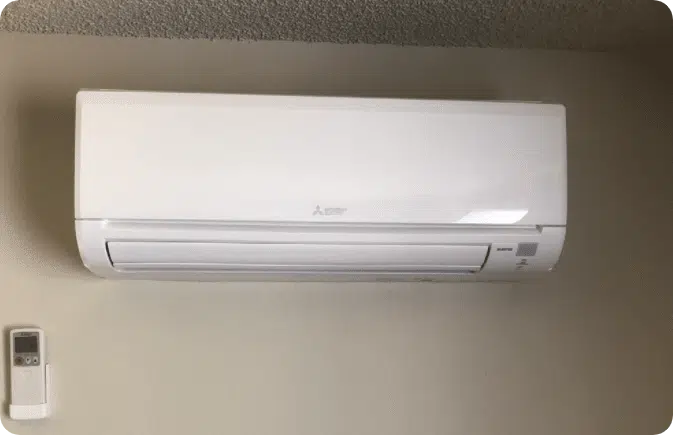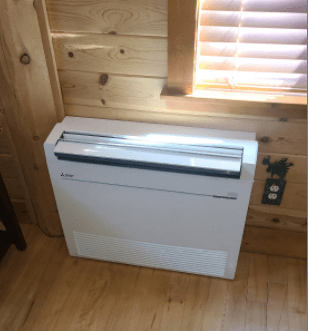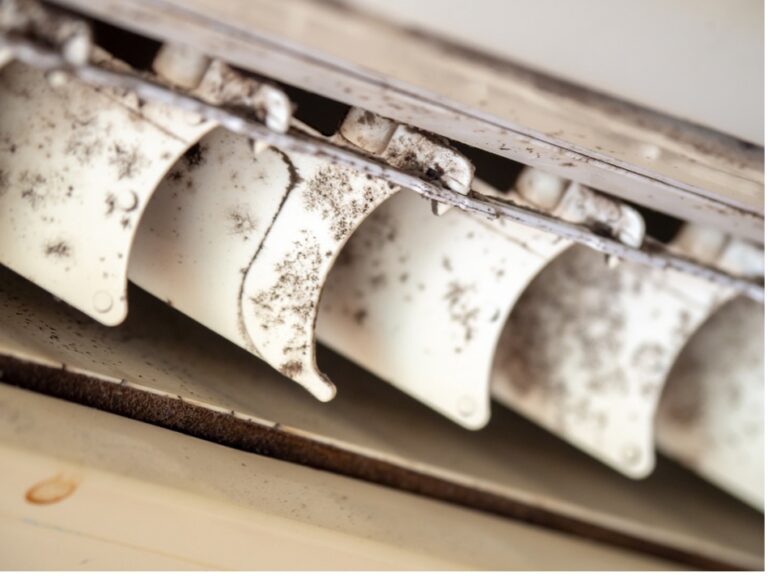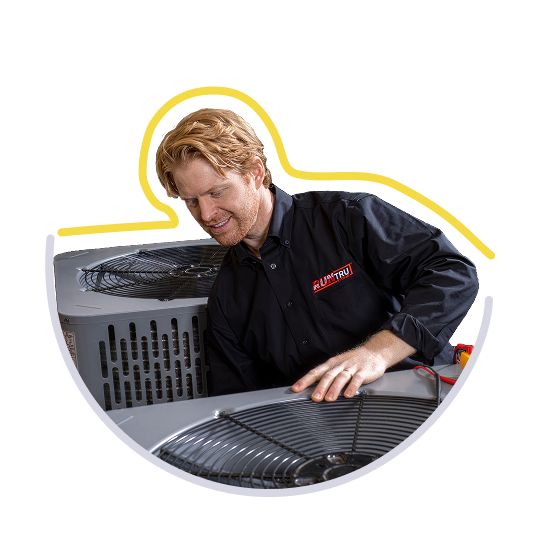Heat pump systems and ductless mini-splits are becoming more popular than ever for homes and businesses across the country. And, South Central Pennsylvania is no different. For a long time, people in the northeast part of the country only considered heat pumps useful for air conditioning.

Now, today’s models can keep any home warm, even with the coldest temperatures we see in Manchester, York, and across the state.
But, how do they work, exactly?
That’s the question we’re addressing in this article. And, there’s a lot to unpack. If you’d like to learn more about why these systems are so great, you can check out our articles here, here, and here.
To break down the topic, we’ll start by explaining the basic idea behind these systems. Then, we’ll dig into the various parts and how they work together to do the job.
Finally, we’ll give you an idea of what a system like this would look like in your house. And what you can expect during the installation.
And, we’re always around to answer more questions! If you’d like to learn more about how one of these can fit into your home and lifestyle here in PA, give us a call at Air Comfort Technologies! Or use the form below to email us. Either way, we’ll get you started with a free consultation.
Ductless Vs. Baseboard Heating In York, PA Homes
How Does A Mini-Split Work?
A mini-split uses a heat transfer process to move warmth from one place to another. Since it doesn’t generate heat, the system doesn’t use a lot of energy. And it moves heat but not air. So, it doesn’t require ductwork.
The outdoor heat pump either draws in heat in the winter. Or, it gets rid of the heat in the summer. Inside, the air handlers draw in the air, warm or cool it, and then recirculate it at the temperature you want.

That’s the basics, and we’ll get into more detail as we go.
Instead, the system draws heat from your home in the summer. Or from outside during the winter (we’ll explain how that works a little later). Then, that heat travels through linesets running refrigerant liquid in a closed loop to the indoor and outdoor components.
In AC mode, the system “dumps” the warmth outside. In heating mode, the mini-split draws in the outdoor heat and sends it into your home.
Heat Transfer
A heat transfer is when warmth, or thermal energy, moves from one place to another. It works because, in physics, heat is attracted to cold areas. That’s a large part of why mini-splits are so energy efficient: They never burn gas or oil or use electricity to create heat! Instead, they move that thermal energy from one place to another.
Heating A Home
Even in the dead of winter, there’s at least some heat outside. Otherwise, we’d freeze to death as soon as we left the house! That heat gets attracted to the freezing-cold liquid. It warms up the coolant, and then the heat pump uses a compression process to amplify that heat.
When the coolant continues its loop back into the house, it “carries” that heat with it. By then, it’s strong enough to keep your home warm.
Cooling A Home
In the summer, the coolant liquid carries the heat out of the house. Then, the heat pump works in reverse: It removes the heat from the liquid, making it cold again when it travels back into the house.
Read More: How Do Ductless Mini-Splits Dehumidify In The Summer?
Parts Of A Mini-Split
A mini-split gets its name because it’s “split” between outdoor and indoor units. And, it’s smaller than a conventional system. For instance, you can get a heat pump for your home that still uses all your ductwork. What we’re talking about here is a little different.
The three main components to explore when talking about a ductless system are the
- Heat Pump
- Linesets
- Air Handlers
Heat Pump
The heat pump is responsible for the heat transfer process. It’s the outdoor unit, and it resembles the central air conditioning condensers you’re used to seeing right next to people’s houses. But they’re usually a lot skinnier and take up less room. The exhaust fan is also on the side instead of on the top.
Most units are almost square.
Larger and more powerful heat pumps are rectangular with two fans.
Linesets
When we talk about the refrigerant running in a closed-loop, we’re talking about the liquid running through line sets connecting the heat pumps to the air handlers. The lines are skinny, flexible tubes, and the coolant flows through them.
We bundle all those lines along with any power supplies into a lineset. That’s a plastic casing that keeps them all protected while keeping the appearance neat and tidy.
Air Handlers
The air handlers circulate the air in your house. Each one comes with a thermostat so that you can program every one of them separately. You can choose to have one air handler for a single room or place them all over the house. Or, any combination in between!
The air handler draws in the air from the room where you install it. Then, depending on the time of year, it warms or cools the air. Then, it sends it back out into the room. That’s how you get to the temperature you want.
Read More: How Much Does A Mini-Split Cost?
Types Of Air Handlers
The four common types of air handlers are:
- High-Wall Units
- Low-Wall Units
- Recessed Ceiling Cassettes
- Short Ducted Runs
High-Wall Units
These are long, skinny rectangular units you may see mounted on a wall near the ceiling. They’re great for rooms where you want the system out of the way or if you have a lot of furniture.
Low-Wall Units
Low-wall units look like the radiators or ACs you may see in hotel rooms. But, they work much better. These sit on the wall right near the floor. They’re below the sightline, leaving the walls open for shelves or decoration.

Recessed Ceiling Cassettes
Once installed, the ceiling cassette sits flush with the ceiling. They don’t stick out at all and are great for larger areas.
Short Ducted Runs
If you have a lot of small rooms on the same floor, you can go with a short-ducted run. This way, one air handler provides heating and cooling through small ducts to a few different rooms. You give up having separate thermostats for each room. But, it can be more cost-effective than going overboard with a bunch of wall units for a cluster of smaller rooms.
Installing A Ductless System
One of the best parts about a ductless system is how easy they are to install. The air handlers mount directly to the wall about as easily as hanging a flat-screen TV! And, we just need to place a heat pump on a mount outside.
The line sets are flexible enough to run between the rafters behind your walls. At most, you’ll see a little bit of the casing coming out from the air handler inside. Outside, they look like a rain gutter.
We can install a one-zone (that’s one heat pump with a single air handler) in one day. Even a more extensive multi-zone system (one heat pump with up to eight air handlers) takes a single workweek. And, for any setup, there’s no knocking through walls or installing big, bulky, expensive ductwork.
Mini-Split Installations Near Manchester, PA
Does a mini-split installation sound like the right choice for your home in Manchester, PA — or anywhere near York, or Lancaster? Or, do you still have some questions about how they’d fit into your home, lifestyle, and budget? Either way, Air Comfort Technologies is here to help! Click below or call for a free consultation.
Schedule A Ductless Consultation





